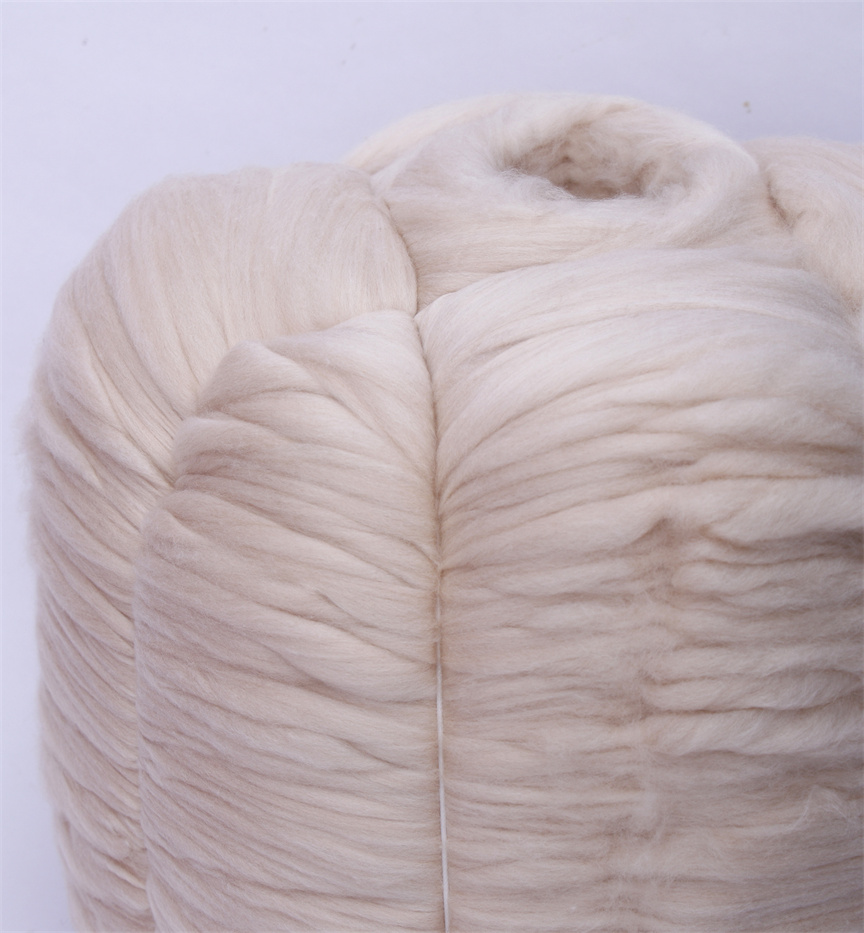shmere Goats can be characterized as follows: “A cashmere goat is one which produces a fine undercoat of any commercially acceptable color and length. This down should be less than 18 microns (µ) in diameter, crimped as opposed to straight, non-medullated (not hollow) and low in luster. It should have a clear distinction between the coarse, outer guard hair and the fine underdown and should have good handle and style.”
Fiber color ranges from deep brown to white, with most of the intermediate colors falling into the grey category. Color of the guard hair is a not a factor when assessing cashmere fiber color, but guard hair colors that vary wildly (such as pintos) can make sorting the fiber difficult. Any length over 30mm after shearing is acceptable. Shearing will reduce the length of the fiber by at least 6mm if done correctly, more if the hated “second cut” occurs. After processing, the longer fibers (over 70mm) go to spinners for manufacture into fine, soft yarns and the shorter fibers (50-55mm) to the weaving trade to be blended with cotton, silk or wool to produce a superior quality woven fabric. A single fleece may contain some long fibers, usually grown on the neck and midside, as well as some shorter fibers, present on the rump and belly.
Fiber character, or style, refers to the natural crimp of each individual fiber and results from the microscopic structure of each fiber. The more frequent the crimps, the finer the spun yarn can be and therefore the softer the finished product. “Handle” refers to the feel or “hand” of the finished product. Finer fiber generally has better crimp, although this is not necessarily so. It is very easy for the human eye to be deceived by a well crimped, but coarser fiber. For this reason, estimating micron diameter is best left to the fiber testing experts. Very fine fiber which lacks the requisite crimp should not be categorized as quality cashmere. It is the crimp of quality cashmere fiber that allows the fiber to interlock during processing. This in turn allows it to be spun into a very fine, usually two-ply yarn, which remains lightweight yet retains the loft (tiny air spaces trapped between the individual fibers) that characterizes quality cashmere sweaters. This loft retains heat and is what makes cashmere different from wool, mohair and especially, man-made fibers.
Warmth without weight and incredible softness suited for a baby’s skin is what cashmere is all about.
Post time: Jul-15-2022




